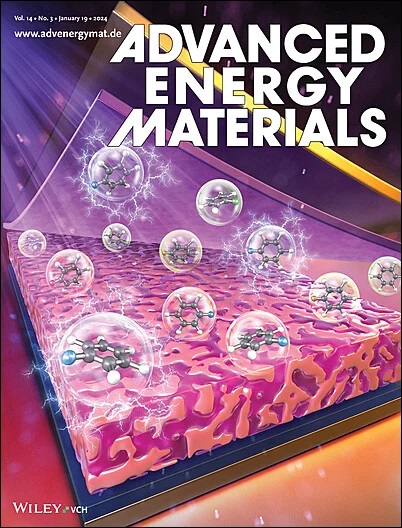Plasma-Induced Construction of S-Scheme Heterojunctions Enables Photo-Enhanced Peroxymonosulfate Activation for Gaseous Toluene Removal
IF 24.4
1区 材料科学
Q1 CHEMISTRY, PHYSICAL
引用次数: 0
Abstract
Selective activation of peroxymonosulfate (PMS) represents an efficient route to generate the reactive oxygen species (ROS) for the degradation and deep mineralization of organic pollutants, but its activity and selectivity are remarkably lower than what is needed. Herein, an S-scheme heterojunction is developed to effectively modify surface electronic properties and introduce abundant oxygen vacancies, thereby enabling photo-enhanced PMS activation for selective removal of gaseous toluene. S-scheme heterojunction is fabricated by in situ growth of ultrathin Co3O4 nanoparticles on g-C3N4 nanosheets through a rapid plasma treatment. The electronic field at the S-scheme heterostructure interface of Co3O4/g-C3N4 (COCN) facilitates charge transfer, selectively removing low-redox electrons and holes while separating high-redox ones. Photo-excited electrons promote the Co3+/Co2+ redox cycle, thereby enhancing ROS generation and creating continuous PMS activation sites. The COCN catalyst demonstrates remarkably high degradation efficiency (90.2%) and mineralization rate (68.5%) for flowing gaseous toluene in aqueous solution. This study thus provides a feasible strategy for plasma-induced electronic modulation and offers new insights for future heterojunction design aimed at efficient PMS activation.

求助全文
约1分钟内获得全文
求助全文
来源期刊

Advanced Energy Materials
CHEMISTRY, PHYSICAL-ENERGY & FUELS
CiteScore
41.90
自引率
4.00%
发文量
889
审稿时长
1.4 months
期刊介绍:
Established in 2011, Advanced Energy Materials is an international, interdisciplinary, English-language journal that focuses on materials used in energy harvesting, conversion, and storage. It is regarded as a top-quality journal alongside Advanced Materials, Advanced Functional Materials, and Small.
With a 2022 Impact Factor of 27.8, Advanced Energy Materials is considered a prime source for the best energy-related research. The journal covers a wide range of topics in energy-related research, including organic and inorganic photovoltaics, batteries and supercapacitors, fuel cells, hydrogen generation and storage, thermoelectrics, water splitting and photocatalysis, solar fuels and thermosolar power, magnetocalorics, and piezoelectronics.
The readership of Advanced Energy Materials includes materials scientists, chemists, physicists, and engineers in both academia and industry. The journal is indexed in various databases and collections, such as Advanced Technologies & Aerospace Database, FIZ Karlsruhe, INSPEC (IET), Science Citation Index Expanded, Technology Collection, and Web of Science, among others.
 求助内容:
求助内容: 应助结果提醒方式:
应助结果提醒方式:


